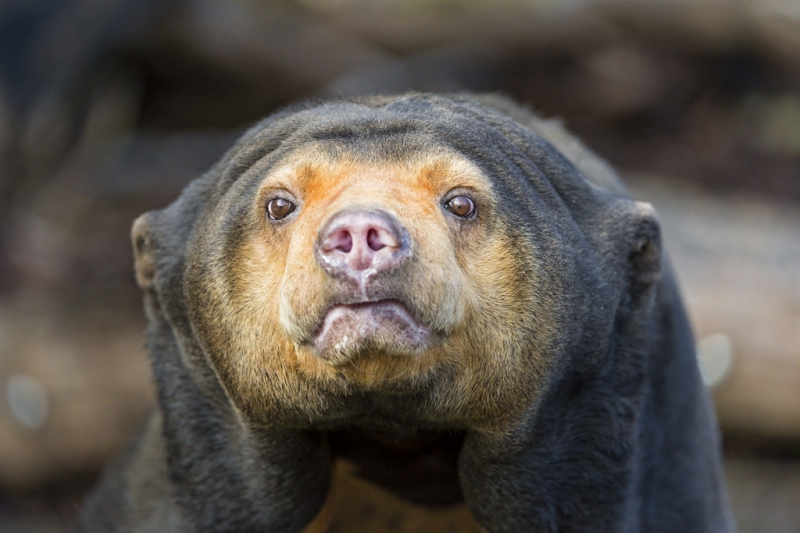Among the wild animals, the bear is loved by humans as the most friendly image. Apart from pandas and polar bears, which are familiar to many, bear species live on the planet. Among them, we introduce "Honey Bear", the smallest bear in the world.
Honey Bear
Honeybee is a mammal with a carnivorous bear, often called a Malay bear or a sun bear (scientific name: Helarctos malayanus). The name of the sun bear, like a white, yellowish pattern engraved on its chest, looks like a rising sun. This sun pattern is like a fingerprint when hit by a human, because every bear has a different pattern.
It is as small as the smallest bear on earth. The average height is about 1.1 to 1.4 meters and weighs only 23 to 65 kilograms. The fur color is usually black, dark brown or gray. However, the face area is lighter in color, and the nose and mouth are shorter. The claws, on the other hand, are long and curved, specializing in easy climbing.
In particular, the jaws are very hard and strong, and they are used to tear up trees and eat insects under the bark, and even hard coconut shells can be taken with teeth and jaws. The smell is so keen that it is about 1,000 times better developed than human beings.
The biggest feature is that it has a very long tongue compared to other bears. This tongue, up to 25cm long, is used to suck larvae and honey from gaps in trees and rocks and other nests. Because it is omnivorous, it mainly eats fruit and insects, and it also consumes small birds, lizards, rats and palm trees.
Habitat is Southeast Asia, living in jungle or woody areas. They live mainly in Borneo, Sumatra, Malaysia, Thailand, Vietnam, Cambodia and Laos, but some are found in eastern India or southern China.
 |
| ▲ Source = Flickr |
Endangered and conservation efforts
Honeybee, however, is a hard breed that is not well known in the wild. There is very little information known to date.
In addition, human hunting and habitat loss are leading to a decline in population. Especially, it lives in coconut, palm oil, and other commercial crops, and is suffering from being killed or smuggled when found in human.
According to the International Union for Conservation of Nature (IUCN), solar bears have been on the verge of extinction because of their 30% decline in population over the past 30 years. The preservation effort has become urgent.
Siew Te Wong, a leading wildlife scholar, has established a Borneo Honey Bear Conservation Center in Malaysia and is dedicated to conservation efforts. A total of 44 bears rescued in the wild are housed, mostly by poachers who are separated from their families by orphaned or unable to adapt to the environment. Wong, who has studied solar bears for 20 years, has been rescuing and treating 55 bears with his colleagues since 2008. We are also working on educating the public not only in structure but also educating the sun bear.
There are also products made by those who trafficked illegal Sun bears in Myanmar and who felt the threat of extinction of the sun bear directly on their skin. It is the Sun Bear Sunscreen created by Joe Ripper and Luke Slobin. 80% of the revenue from the sale goes to Wong's Honey Bear Conservation Center. According to Ripper, the top goal of Sunbare sunscreen is to protect and support honeybear. They explained that if people could know the value of ecotourism and conservation for illegal hunting, poaching, and environmental destruction, the environment would be much better.
![[Issue] The world’s smallest bear ‘Honey Bear’ issue the worlds smallest bear honey bear](https://moontore.com/wp-content/uploads/2019/02/issue-the-worlds-smallest-bear-honey-bear-1200x700.jpg)


